Star Wars timeline explained: How to watch all the movies and TV series in order
 Disney/LucasFilm
Disney/LucasFilmA long time ago, in a galaxy far, far away, George Lucas created one of the most incredible and complex science fiction franchises of all time. There’s a lot going on, but we’ve laid out the entire Star Wars timeline for you, including all the movies and TV series.
Star Wars has been entertaining (and dividing) audiences since 1977, and there are still lots more films and TV series to come too.
But, our focus here isn’t the array of upcoming Star Wars movies and shows. No, we’re here to look back at the 11 Star Wars movies and the abundance of small-screen efforts and arrange them into some semblance of order.
Here’s the entire Star Wars timeline, from the big screen, the latest streaming service content, and those odd stories that don’t quite fit anywhere.
Star Wars movies in order of release
The easiest way to dive into Star Wars is to just watch the movies in the order they were released. This means you’ll start with A New Hope from 1977, and finish with The Rise of Skywalker from 2019.
 Disney
DisneyGeorge Lucas had an unusual method of releasing his Star Wars movies, starting with Episodes 4 to 6 in the ‘70s and ‘80s, before releasing Episodes 1 to 3 in the late ‘90s and early ‘00s. Then, Disney came along and kickstarted the Sequel Trilogy in 2015.
Star Wars movies in release order:
- Episode 4: A New Hope (1977)
- Episode 5: The Empire Strikes Back (1980)
- Episode 6: Return of the Jedi (1983)
- Episode 1: The Phantom Menace (1999)
- Episode 2: Attack of the Clones (2002)
- Episode 3: Revenge of the Sith (2005)
- Episode 7: The Force Awakens (2015)
- Rogue One: A Star Wars Story (2016)
- Episode 8: The Last Jedi (2017)
- Solo: A Star Wars Story (2018)
- Episode 9: The Rise of Skywalker (2019)
Tackling Star Wars in this manner will allow you to enjoy the reveal of the connection between Luke Skywalker and Darth Vader before exploring Anakin Skywalker’s backstory in the prequels.
Generally speaking, most would agree the Prequel Trilogy is the weakest part of the Skywalker Saga. So, at least this way, you’re getting the good stuff first, before a lull in the middle, and picking back up again in quality by the end (The Rise of Skywalker aside, that is).
Star Wars movies in chronological order
If you want to see the Star Wars story unfold in a more orderly manner, start with The Phantom Menace and the Prequel Trilogy, catch the spinoffs before enjoying the Original Trilogy, and then wrap up with the Disney sequels.
 Disney
DisneyStar Wars movies in chronological order:
- Episode 1: The Phantom Menace
- Episode 2: Attack of the Clones
- Episode 3: Revenge of the Sith
- Solo: A Star Wars Story
- Rogue One: A Star Wars Story
- Episode 4: A New Hope
- Episode 5: The Empire Strikes Back
- Episode 6: Return of the Jedi
- Episode 7: The Force Awakens
- Episode 8: The Last Jedi
- Episode 9: The Rise of Skywalker
It isn’t necessarily the way Lucas intended it, but the saga does make a little more sense when you watch it this way. Characters’ backstories are fully fleshed out and the sequence of events is really clear, but, you do lose the magic of watching the older movies first, so it’s a tough call.
Ultimately, both release order and chronological order work and have their own merits, it just depends on whether you value nostalgia over coherence. I tend to stick to the release order, but I went for the chronological order on my last rewatch and it was just as enjoyable.
What is the Machete Order in Star Wars?
The Machete Order of watching Star Wars is essentially a more precise version of the chronological order. With this approach, you see the reveal of Anakin Skywalker being Darth Vader in The Empire Strikes Back, before a big flashback to how that happened in the Prequel Trilogy.
 Disney
DisneyConceived by a blogger by the name of Rod Hilton way back in 2011, the Machete Order was designed as a way of introducing the Skywalker Saga to newcomers to the franchise. This concept works pretty well, as you depart from the Original Trilogy with the knowledge that Luke and Darth Vader are related, before diving into the past and learning how Anakin Skywalker became Vader.
You then return to the Original Trilogy to see Luke saving his father in Return of the Jedi. Then, thanks to the Sequel Trilogy, we pick up Luke’s story as he becomes a mentor to Rey, and we finally see the ultimate demise of Emperor Palpatine.
Star Wars: The Machete Order:
- Episode 4: A New Hope
- Episode 5: The Empire Strikes Back
- Episode 1: The Phantom Menace
- Episode 2: Attack of the Clones
- Episode 3: Revenge of the Sith
- Episode 6: Return of the Jedi
- Episode 7: The Force Awakens
- Episode 8: The Last Jedi
- Episode 9: The Rise of Skywalker
Originally, the Machete Order did not include The Phantom Menace as it was deemed irrelevant. The movie is now widely accepted in the order, though, as it offers valuable context into how young Anakin joined the Jedi, and the death of Qui-Gon Jinn is also hugely important to the story of one of the best Star Wars characters, Obi-Wan Kenobi.
Obviously, when the Machete Order was introduced, the Disney movies didn’t exist, but they’re easily tacked onto the end. Generally speaking, the Rogue One and Solo spinoffs are not a part of this order.
The complete Star Wars timeline: All films and series in order
Looking solely at existing movies and TV shows within official Star Wars canon, the earliest story in the history of the galaxy is actually the animated series Young Jedi Adventures, and the timeline currently ends with The Rise of Skywalker.
 Disney
DisneyThe most important thing to know before actually exploring the whole Star Wars timeline is to understand what BBY and ABY mean. Basically, The Battle of Yavin (depicted at the end of A New Hope) is used as the great divide in time throughout the galaxy: anything before is dated as BBY, while anything after is dated as ABY.
We should also note, that with this breakdown of the timeline, we have not included any books, comics, or games. As much as we love them all, some are only canon-adjacent and would simply confuse matters.
All of Star Wars in chronological order:
- Young Jedi Adventures (232 BBY)
- The Phantom Menace (32 BBY)
- Attack of the Clones (22 BBY)
- The Clone Wars (22-19 BBY)
- Revenge of the Sith (19 BBY)
- The Bad Batch (19 BBY)
- Solo: A Star Wars Story (13-10 BBY)
- Obi-Wan Kenobi (9 BBY)
- Andor (5 BBY)
- Rebels (5-0 BBY)
- Rogue One: A Star Wars Story (0 BBY)
- A New Hope (0 BBY)
- The Empire Strikes Back (3 ABY)
- Return of the Jedi (4 ABY)
- The Mandalorian Season 1-2 (9 ABY)
- The Book of Boba Fett (9-11 ABY)
- The Mandalorian Season 3 (11 ABY)
- Ahsoka (11 ABY)
- Resistance (34-35 ABY)
- The Force Awakens (34 ABY)
- The Last Jedi (34 ABBY)
- The Rise of Skywalker (35 ABY)
Are there other Star Wars movies and series that don’t fit the timeline?
Yes, some Star Wars stories are either outside of canon or have blurry timelines. These are mainly animated shows, but there’s a special place on the outskirts of the timeline for The Holiday Special, too.
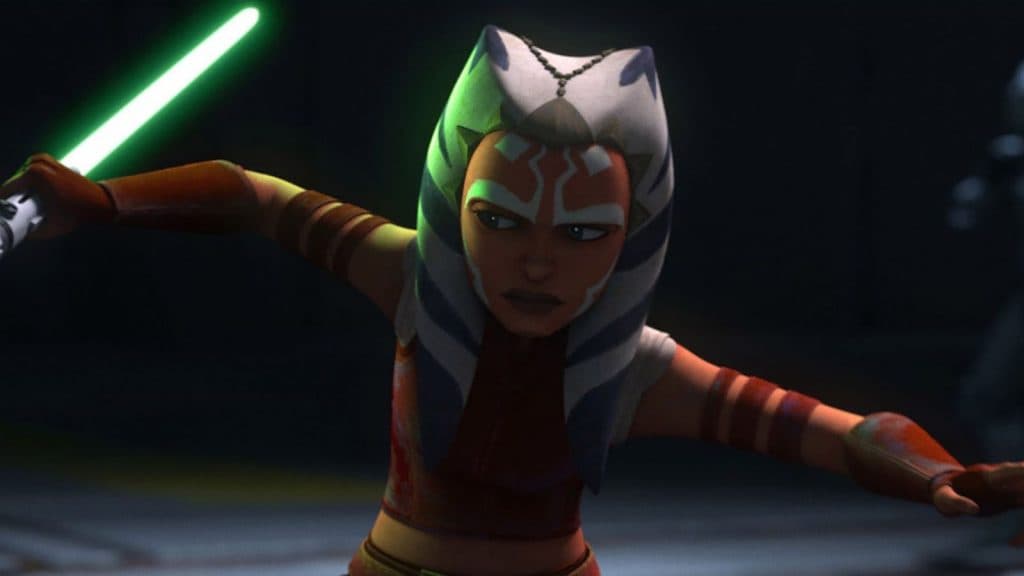 Lucasfilm
LucasfilmLet’s look at the simple ones first. Both Tales of the Jedi and Visions are anthology series, and as such, have various stories taking place in all kinds of timeframes within the Star Wars universe.
Then, you’ve got Genndy Tartakovsky’s brilliant Star Wars: Clone Wars. This impressive 2D animated series gave us 25 episodes detailing the events after Attack of the Clones, featuring key characters like Obi-Wan, Yoda, and Mace Windu. The only problem is, it’s not technically part of the canon.
The Holiday Special is one piece of Star Wars media no one ever has to see, and it’s actually not available anywhere anyway. This cursed special aired in 1978 and centers around Chewbacca returning to his home planet, Kashyyyk, to celebrate Life Day. It’s not canon, and rightly so. The same goes for the double bill of Ewok stories, Caravan Of Courage: An Ewok Adventure and Ewoks: The Battle For Endor. They take place in 3 ABY, but the straight-to-TV efforts are not canonical.
Finally, you have the LEGO Star Wars Holiday Special. It’s actually a lot of fun (way better than the original Holiday Special), but given the time travel nature of the story, it’s just impossible to pin to one part of the Star Wars timeline.
How will future Star Wars movies and TV shows fit into the timeline?
There are three new Star Wars movies on the way, that’ll show us vastly different parts of the timeline. Dawn of the Jedi will go back in time to the birth of the Jedi Order; Mandalorian & Grogu will follow on from the TV show; and New Jedi Order will show us what Rey gets up to after The Rise of Skywalker.
 Disney+
Disney+Those three movies are the easiest to pin down a place in the timeline out of all the upcoming projects from a galaxy far, far away. Dawn of the Jedi is expected to take place around 25,000 BBY and will show us the discovery of the Force and the very first Jedi to harness its powers.
Dave Filoni is working on a movie, too, and will follow up his work on The Mandalorian by giving Din Djarin and Baby Yoda their time to shine on the big screen. Mandalorian & Grogu is the working title, and it’s pretty self-explanatory what this film will entail. We expect it to take place in 12 ABY, just after the events of Season 4 of the show.
Finally, Daisy Ridley will star in New Jedi Order, set 15 years after the events of The Rise of Skywalker. That takes us to 50 ABY, where we’ll see Rey training a new group of Jedi in the ways of the Force.
Upcoming Star Wars projects:
- Dawn of the Jedi (25,000 BBY)
- The Acolyte (132 BBY)
- Lando movie (roughly 10 BBY)
- Andor Season 2 (4-0 BBY)
- Mandalorian & Grogu (12 ABY)
- The Skeleton Crew (roughly 13 ABY)
- New Jedi Order (50 ABY)
- Tales of the Empire (various timeframes)
- Tales of the Jedi Season 2 (various timeframes)
Outside of that big three, there’s also a Lando movie in development. Donald Glover is overseeing the creative direction on that one, and will also star in the new movie. Little is known at this stage, but we would imagine it’ll take place just after the events of Solo, placing it around 10 BBY.
On the small screen, Tales of the Empire is dropping on Star Wars Day (May the 4th). This animated series is split into two parts, with three episodes focusing on Morgan Elspeth’s fall to the dark side, and three episodes detailing Barriss Offee’s early days as an Inquisitor. As such, it’s hard to place in the timeline. The same goes for Tales of the Jedi Season 2, which’ll follow the anthology approach once more.
We’ve then got The Acolyte release date coming up in June. That series will also take us back in time to 132 BBY, a period of relative peace in the galaxy, though that looks set to be disturbed judging by the trailer for the new TV show.
There’s also Andor Season 2 coming up, which is simple enough to pin down. It’ll follow directly from the first season, leading up to the events of Rogue One, and will take place from 4 BBY through to 0 BBY.
Little is known about The Skeleton Crew, though rumors suggest it’ll take place roughly nine years after the events of Return of the Jedi. That’d place it around 13 ABY.
The different eras in Star Wars explained
Within the world of Star Wars, there are eight different eras to help differentiate between the different periods of time. They are largely determined by changes in the political landscape.
Star Wars eras in order:
- Dawn of the Jedi (25,793-25,053 BBY)
- The Old Republic (25,053-1,000 BBY)
- The High Republic (500-100 BBY)
- Fall of the Jedi (32 BBY-19 BBY)
- Rise of the Empire (19BBY-0 BBY)
- Age of Rebellion (0 BBY-4 ABY)
- The New Republic (9 ABY-34 ABY)
- Rise of the First Order (34 ABY-35 ABY)
Dawn of the Jedi
The earliest known era in the Star Wars universe, that has so far only been depicted in books and comics. This is a time where the Jedi Order is first being established, and the ways of the Force are only just being discovered.
There are three key characters during this era, the young Je’daii Journeyers, Shae Koda, Tasha Ryo, and Sek’nos Rath. We may well see them portrayed in James Mangold’s Dawn of the Jedi movie.
The Old Republic
 LucasFilm
LucasFilmThis is the longest period in Star Wars canon. It’s a period of time largely dominated by the Sith, and it’s the dark side of the Force that brought about the demise of the Old Republic when they started warring with each other.
Notable characters from this era include Darth Bane, Revan, Darth Malgus, and Tenebrae. Basically, all the bad guys ruled supreme during this time.
The High Republic
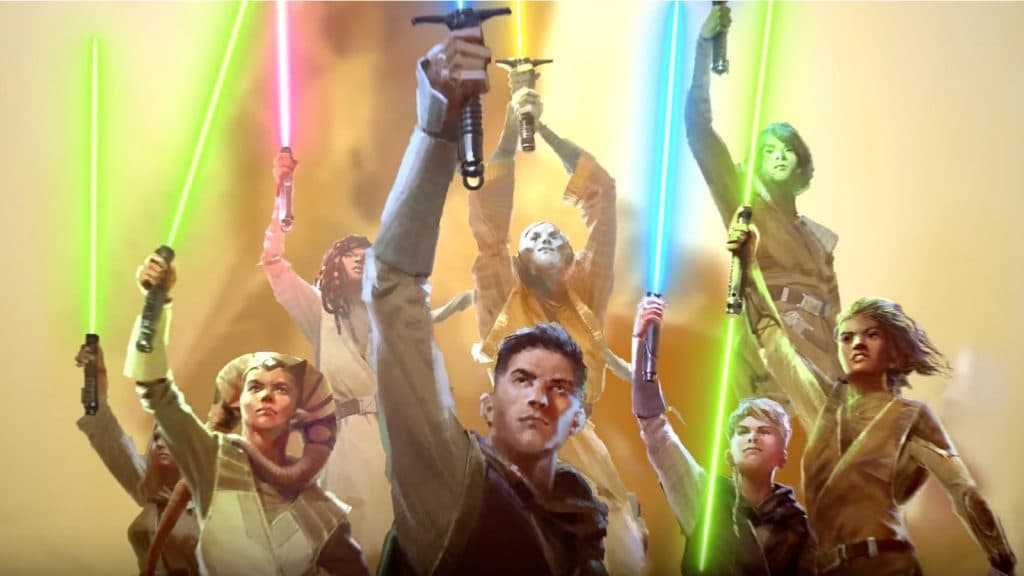 Disney/StarWars.com
Disney/StarWars.comAfter the demise of the Sith, the Jedi rise to prominence once more and become the protectors of the galaxy. It’s a period of peace, largely, but there are dark forces operating beneath the surface that threaten to bring the Republic to its knees.
You can read all about this era in the rather brilliant trilogy of novels: Light of the Jedi, Rise of the Storm, and The Fallen Star. The story there involves a mysterious and malevolent band of space vikings known as the Nihil, who wreak havoc across the galaxy. The key Jedi at this time are Avar Kriss, Elzar Mann, Bell Zettifar, and Loden Greatstorm.
Fall of the Jedi
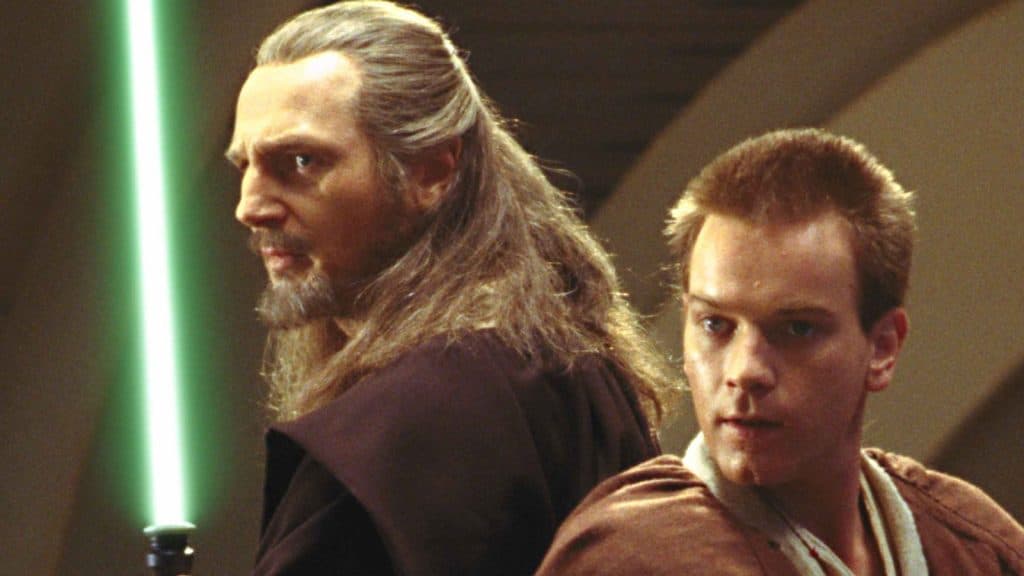 Lucasfilm/20th Century Fox
Lucasfilm/20th Century FoxMost will know all about this period of time, as it’s the main storyline in the Prequel Trilogy. The Sith come out of their long hibernation, infiltrating the Senate and the Jedi Order, and destroying the democracy holding everything in the galaxy together.
This period sees the rise and fall of Anakin Skywalker as he becomes Darth Vader, under the influence of Emperor Palpatine. Other notable villains include Darth Maul, Count Dooku, and General Grievous. On the light side of the Force, the main players are Obi-Wan Kenobi, Yoda, and Mace Windu.
Reign of the Empire
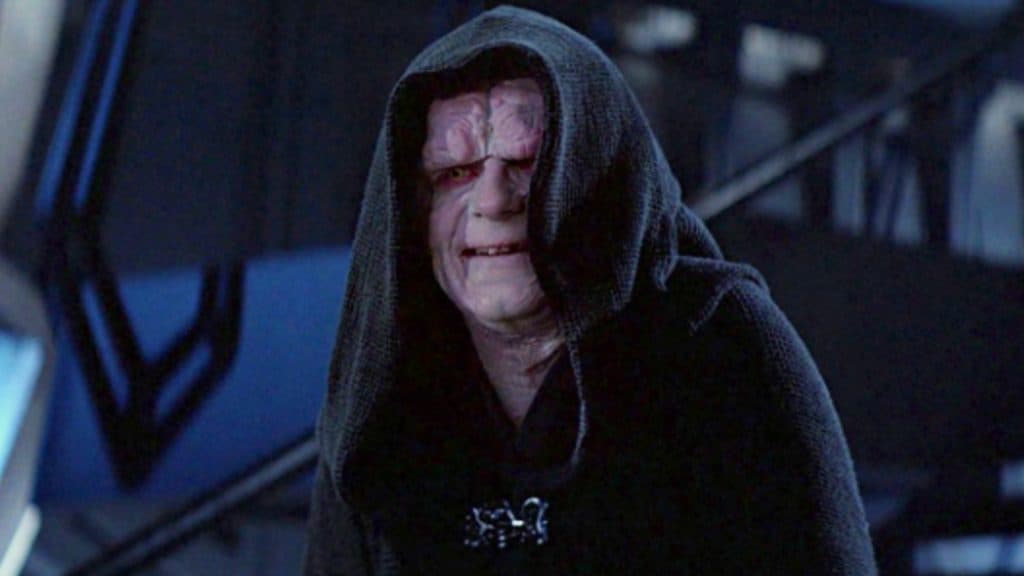 Lucasfilm
LucasfilmPerhaps the darkest era of all, as the galaxy falls under the rule of Emperor Palpatine and his Galactic Empire. Death Stars, Stormtroopers, and of course, Darth Vader, terrorize innocent people throughout the galaxy.
Palpatine and his henchman, Vader, are the main figures during this era. But, the Rebels crew — Ezra Bridger, Hera Syndulla, and Kanan Jarrus — are lurking in the background, fighting the good fight. It’s also the era where Cassian Andor develops his own interest in the Rebellion.
Age of Rebellion
 Disney
DisneyThe most hopeful era of Star Wars, as the Galactic Empire is brought down by the plucky Rebellion. The Age of Rebellion is depicted in the Original Trilogy, as planets and Death Stars are destroyed, the Emperor is betrayed by Darth Vader, and Luke Skywalker learns the ways of the Jedi.
We don’t need to tell you who’s important during this time, but just in case: Darth Vader and Palpatine are the big bads, while Luke, Princess Leia, and Han Solo are the heroes.
The New Republic
 Disney
DisneyWith the Empire gone, the galaxy adjusts to a new period of peace with the New Republic era. We see this period of time depicted in shows like The Mandalorian, The Book of Boba Fett, and Ahsoka.
It figures, then, that the key figures of this era, at least in mainstream Star Wars media, are Mando and Grogu, Ahsoka Tano, and the evil Grand Admiral Thrawn.
Rise of the First Order
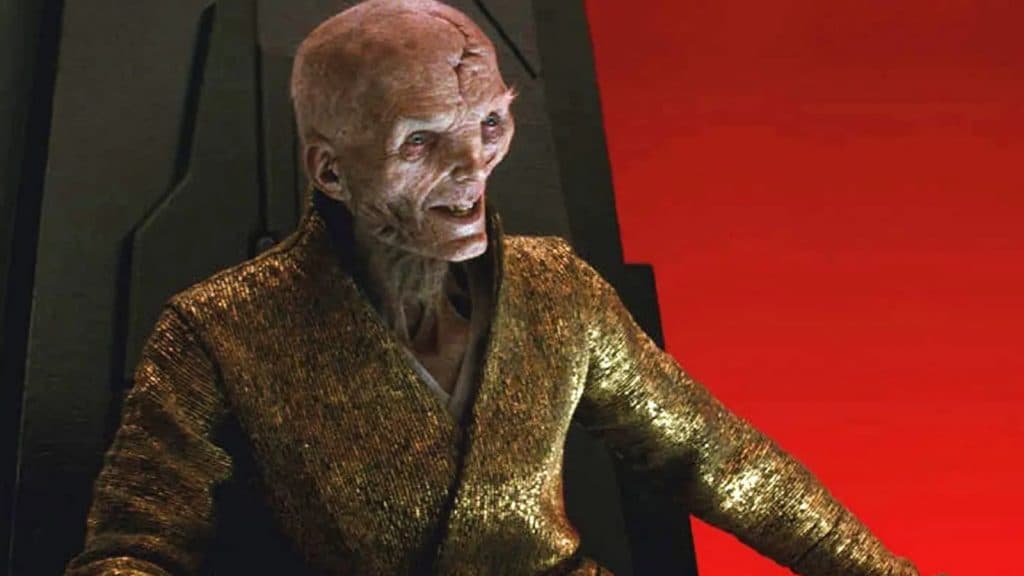 LucasFilm/Disney
LucasFilm/DisneyFrom the ashes of the Empire, a new evil regime emerges in the form of the First Order. This period of time is depicted during the Sequel Trilogy, as Rey and the Resistance take on Kylo Ren and Supreme Leader Snoke.
Rey is the star of this era, and has help from an older Luke Skywalker, Leia, and Han Solo. She also has allies in the form of Finn and Poe Dameron. The First Order is led by Snoke, with Kylo Ren and General Hux commanding the fleet of new-age Stormtroopers. But, behind it all, is Emperor Palpatine pulling the strings once more.
How to watch Star Wars – is it streaming?
You can watch pretty much every bit of Star Wars — apart from the Holiday Special — on Disney+ thanks to the House of Mouse buying out LucasFilm back in 2012.
You’ll need to be a Disney+ subscriber, of course, but you can join the platform by clicking the button below.
That’s the Star Wars timeline explained in full, and we didn’t even need the Force to get it done. We hope that makes things a little clearer now. While you digest all of that, check out our list of the best Star Wars quotes and revel in more nostalgia. Or, you can really nerd out and see how tall Darth Vader is and compare that to how tall Yoda is.
Please note that if you click on a product link on this page we may earn a small affiliate commission.